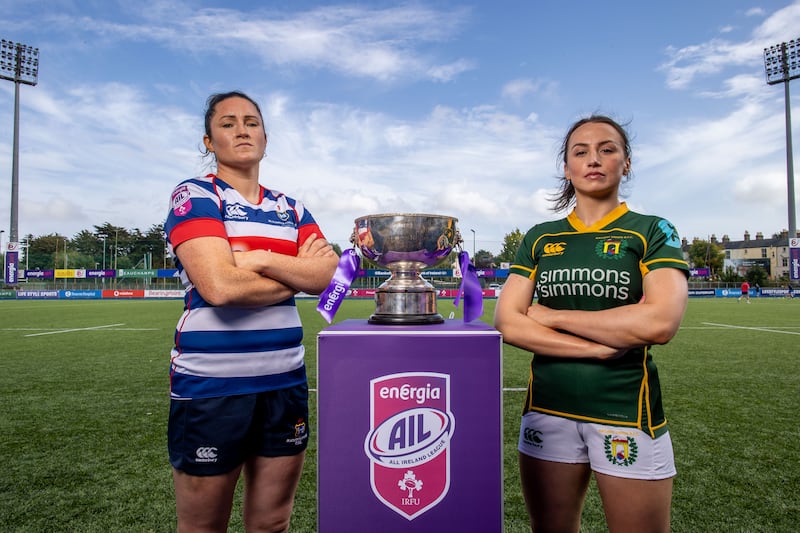The IRFU has pledged an additional €1 million toward boosting facilities and pathways development as part of the Women In Rugby Report which was published on Thursday following an independent review.
This investment will come from the additional €2.4 million already pledged to the women’s rugby, bringing the union’s direct support to the women’s game to over €5.5 million annually.
However, the IRFU chief executive Kevin Potts admitted that they will have to find outside sources for this additional funding. “We would be going to the Government and Sport Ireland to help step in, in the medium term, if there is any assistance we can get in terms or participation, and of course sponsorship will also be helpful.
The report revolved around a survey conducted by Opinions Market Research of almost 900 people involved in the game, and 77 interviews with a range of stakeholders conducted by Amanda Bennett of FairPlay Ltd.
A project steering group was set up to oversee the delivery of this report, comprising of nine people: John Robinson (IRFU President), Greg Barrett (chair of the Rugby Committee), Tony O’Beirne (chair of the National Professional Game Board), Fiona Steed (chair of the Women’s Sub-Committee), Su Carty (IRFU World Rugby Representative), Kevin Potts (CEO IRFU), Jonny Petrie (CEO Ulster Rugby), Colin McEntee (director of rugby development) and David Nucifora (director of high performance). Most were in attendance at the Aviva Stadium for the official launch of the 52-page report.
There was much use of the word ‘alignment’ in maximising existing resources in the aspirational report, and many of the recommendations coming with the caveat ‘indicative timelines’.

In setting out the union’s ambition for performance pathway and for competition structures one of the key findings, as Steed outlined, was that “the majority of people who participated in the survey found the current women’s AIL isn’t fit for purpose, and it’s something the steering group agreed with.”
The Leinster-dominated AIL is compounded by migration to Dublin, and hence the AIL will be expanded to 12 teams in two divisions of six teams from 2023-24. Rather than ringfence teams from each province, as Nucifora recommended for the men’s game only for the clubs to reject that proposal, the initial six-team top-flight will be meritocracy based, with promotion and relegation thereafter. A two-tier AIL of 16 teams by 2027 is “a reasonable aspiration”.
Friday night’s AIL final between Blackrock College and Railway Union at Energia Park will be missing players involved in the Cape Town Sevens, demonstrating that all international obligations come first, albeit the timing of the prestigious final ought to have made this avoidable. But there is no outline as to how many games, if any, internationals will play for their clubs due to the many moving parts.
One of these is the newly proposed Celtic Cup, which will initially involve one team apiece from Ireland, Scotland and Wales pending an increase to at least two teams per country, and will start next month.
This will lead into the Six Nations, to be followed by warm-up games in August and September before World Rugby’s three-tiers Global WXV competition, which begins next year.
As for increasing playing numbers, among other things the barriers cited a reluctance by schools to start rugby for girls, the prevalence and school support for other sports, in particular Gaelic games and hockey for girls, and a lack of PE teacher expertise.
While some clubs focused their resources on the men’s first team, with the women’s team perceived as a lower priority, there has been a positive impact from both the Canterbury Give It A Try and Aldi Play Rugby campaigns, which need further development while continuing to introduce the game at clubs and schools mini-rugby through non-contact or 7s rugby.
There has been progress, if not to the hoped extent. In 2018 there were 1,341 adult players and 2,500 youth players in women’s rugby, which have risen to 3,113 and 4,863, with targets of 5,000 and 6,500 respectively set for 2023.
The priority for engaging more players remains the clubs, albeit in alignment with the schools. The number of teams overall has risen from 190 to 300, pending a target of 375 by next year, with the percentage of clubs offering women’s teams having increased from 21 per cent to 50 per cent pending next year’s target of 59 per cent. The number of schools offering girls’ rugby has increased from 87 in 2018 to 111 this year, with a target of 200 by next year.
The report says the union needs to ensure a minimum of four women’s development officers are supported by a minimum of four participation officers in each province.
There has been huge growth in women’s sport in Ireland, especially in Gaelic games, hockey and football, and also abroad, and there is scope for much more.
In the UK the Women’s Sport Trusts’ 2021 Report Visibility Uncovered projected that the value of women’s sport is set to treble to £1bn by 2030. Similarly, The Sports Consultancy report Capitalising On The Rising Tide – Investing In Women’s Sport published in 2022 shows that World Rugby, Fifa and Uefa experienced a 146 per cent increase in sponsorship investment in their Women’s Games in 2021.
The IRFU’s attitude toward women’s rugby has clearly changed, but there are a finite number of pitches, changing-rooms, floodlights, referees, coaches and volunteers and further investment in these areas is required.
The report recommends offering current and former international players discounted or fully funded coach and/or referee education and deploy them to regional centres of excellence as part of the player pathway programme.
Ultimately though, in addition to breaking down barriers and breaking new ground, the biggest roadblock to all these aspirations is simply money.















